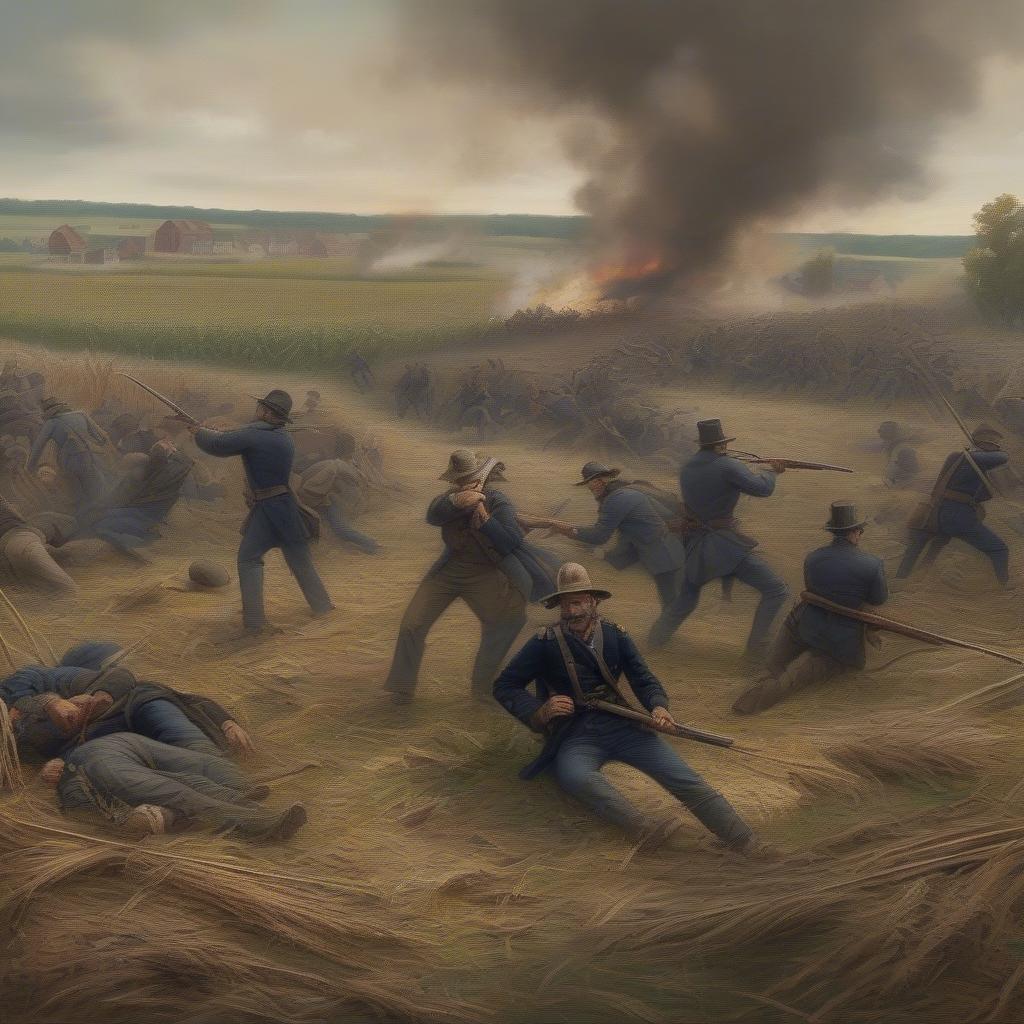
The Battle of Antietam, fought on September 17, 1862, near Sharpsburg, Maryland, remains the single bloodiest day in American history. But Who Won Antietam? The answer is complex and requires looking beyond the sheer number of casualties. While neither the Union nor the Confederacy achieved a decisive victory in the traditional sense, the battle is generally considered a strategic Union victory, albeit a costly one.
Table Content:
The Battle’s Context: Antietam and the Maryland Campaign
The Battle of Antietam was a crucial turning point in the American Civil War. It came at the culmination of Confederate General Robert E. Lee’s Maryland Campaign, a bold offensive into Union territory. Lee hoped a Confederate victory on Northern soil would boost Southern morale, encourage foreign recognition of the Confederacy, and perhaps even influence the upcoming midterm elections in the North.
The Clash of Armies: Antietam’s Fierce Fighting
The fighting at Antietam was brutal and relentless, raging across fields, through a cornfield now infamously known as the “Cornfield,” and over a stone bridge that became known as “Burnside’s Bridge.” The Union Army of the Potomac, under the command of General George B. McClellan, repeatedly attacked Lee’s smaller but determined Army of Northern Virginia.
 The Cornfield at Antietam: A Scene of Carnage
The Cornfield at Antietam: A Scene of Carnage
The battle raged from dawn until dusk, with neither side able to gain a decisive advantage. Though McClellan had superior numbers, he was cautious and deployed his forces piecemeal, allowing Lee to shift his troops and hold off the Union attacks.
The Aftermath of Antietam: A Pyrrhic Victory?
The day after the battle, Lee, facing heavy losses and dwindling supplies, withdrew his army back to Virginia. McClellan, criticized for not pursuing Lee more aggressively, claimed victory. While the victory was far from decisive in a military sense, it had significant political consequences.
 Antietam's Grim Aftermath: The Cost of Battle
Antietam's Grim Aftermath: The Cost of Battle
The Significance of Antietam: Who Won Antietam and Why?
Antietam, despite its horrific cost, was a turning point for the Union. The battle gave President Abraham Lincoln the political leverage he needed to issue the preliminary Emancipation Proclamation, which declared that slaves in Confederate-held territory would be freed on January 1, 1863. This transformed the war from a fight to preserve the Union into a fight against slavery.
“Antietam, while tactically inconclusive, was strategically a Union victory. It stopped Lee’s invasion of the North and allowed Lincoln to issue the Emancipation Proclamation,” says Dr. Amelia Carter, Civil War historian at Gettysburg College.
“The Emancipation Proclamation changed the nature of the war, making it about ending slavery, which discouraged European powers from recognizing the Confederacy,” adds Professor William Davis, military historian at the University of Virginia.
“While both sides suffered terrible losses, the Confederate retreat allowed the Union to claim victory, shifting the momentum of the war,” notes Dr. Elizabeth Johnson, historian specializing in 19th-century America at Yale University.
Conclusion: Antietam’s Enduring Legacy
The question of who won Antietam isn’t easily answered. While the battle itself was a tactical draw, the strategic consequences favored the Union. The Confederate retreat, coupled with the subsequent Emancipation Proclamation, marked a turning point in the Civil War, setting the stage for the eventual Union victory. Antietam, the bloodiest single day in American history, ultimately contributed significantly to the preservation of the Union and the end of slavery.
FAQ
Why was the Battle of Antietam so important? Antietam was a crucial turning point in the Civil War. It halted Lee’s invasion of the North and provided Lincoln the opportunity to issue the Emancipation Proclamation.
What were the casualties at Antietam? Antietam was the bloodiest single day in American history, with approximately 23,000 casualties on both sides.
Where did the Battle of Antietam take place? The battle was fought near Sharpsburg, Maryland.
Who were the commanding generals at Antietam? General George B. McClellan commanded the Union Army of the Potomac, and General Robert E. Lee commanded the Confederate Army of Northern Virginia.
What was the Emancipation Proclamation? The Emancipation Proclamation, issued by President Lincoln after Antietam, declared that slaves in Confederate-held territory would be freed.
Why didn’t McClellan pursue Lee after Antietam? McClellan was criticized for his cautious approach and failure to aggressively pursue Lee after the battle, potentially missing an opportunity to inflict greater damage on the Confederate army.
How did Antietam affect the course of the Civil War? Antietam, by halting Lee’s advance and leading to the Emancipation Proclamation, shifted the momentum of the war in favor of the Union.